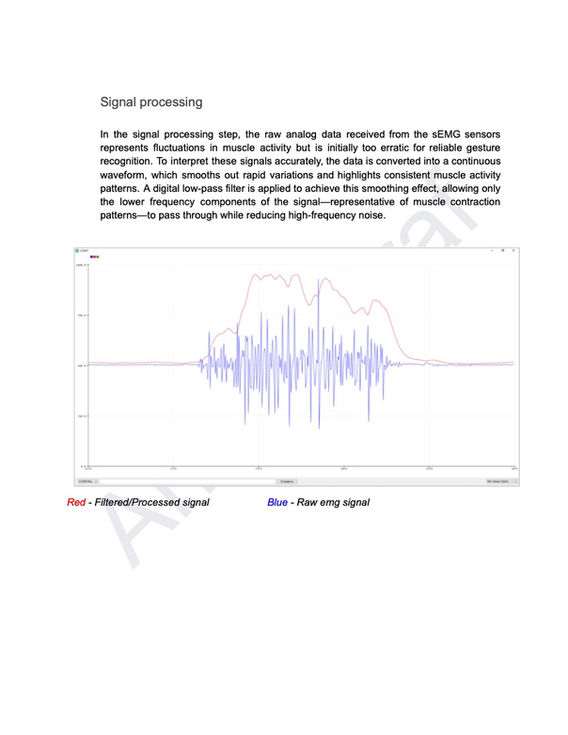

This project aims to provide an accessible, affordable and a more versatile solution to relieve Phantom Limb Pain (PLP) which is experienced by 85% of the amputees. It happens because the brain and the body are not entirely synchronized following an amputation and the patient’s brain tries to move missing limbs or perceives signals originating from them.
The solution involves developing a low cost, 3D printed sEMG (Surface Electromyography) bionic hand which can respond to intended signals for the missing limb and provide visual feedback to the brain. In addition, the project also researches TENS (Transcutaneous Electrical Nerve Stimulation) to provide reverse electrical feedback to the brain. This helps complete the feedback loop to the brain and helps alleviate PLP.
The sEMG (Surface Electromyography) sensors detect muscle signals on the residual limb, driving the movement of the bionic hand mimicking the desired hand movements The bionic hand is designed with three joints per finger and two for the thumb. Five separate servo motors, each tasked with controlling a finger for autonomous movement, were housed in the wrist module's small form factor. The sEMG sensors were placed on the wrist over the radial and ulnar nerve. Long-lasting, and reasonably priced materials were selected so that the prosthetic could fulfill functional needs. The sEMG sensors pick up electrical activity from the nerves and report the signals to Arduino through analog signals. A low pass filter refines the sEMG signals and creates a smoothened continuous curve which is then used to recognize gestures.
This project revealed that the sEMG sensors and the 3D printed hand worked well in tandem, successfully recognizing and imitating the 3 primary gestures (Flexor, extensor and clenching) with high accuracy. The durable joint system also displayed excellent dexterity, closely resembling natural hand movements. The gesture recognition algorithm achieved nearly a 95% success rate without any false positives, and the electrodes were easy to place.
The project demonstrates great potential in replacing conventional mirror box therapy as it doesn’t require large mirror boxes and specialized training or personnel. Paired with TENS, which can send reverse nerve feedback, it can target the root cause of phantom limb pain. With further refinements, this approach could become an accessible and efficient solution for PLP, significantly improving the quality of life for amputees worldwide.












